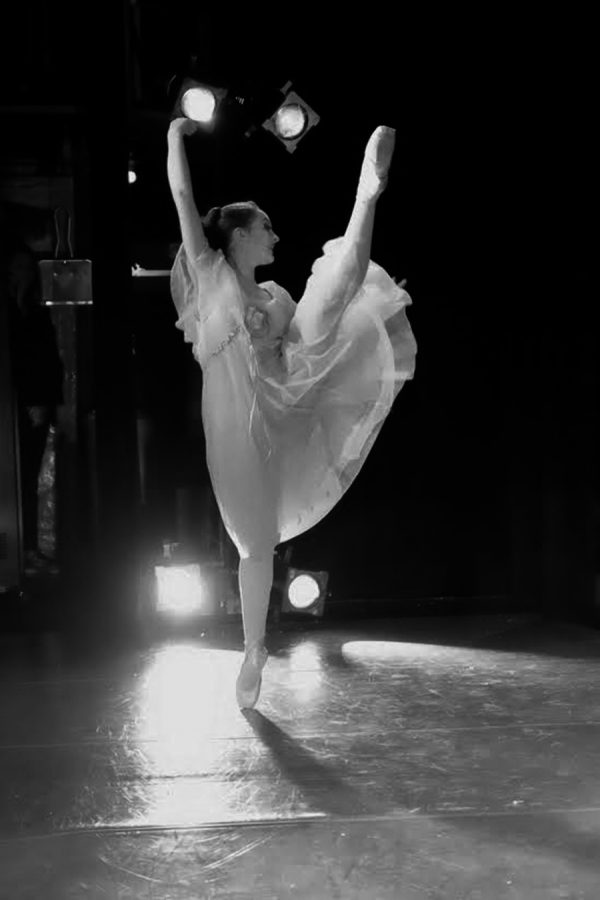What’s Crackin’ During the Nutcracker?
The Nutcracker is a Christmas tradition. The two-act ballet features timeless characters such as the Sugar Plum Fairy, Clara, the Nutcracker and the Snow Queen, and the familiar music of the composer, Tchaikovsky. The ballet is full of beautiful costumes, music, lights, and graceful dancing. Ballet companies all over the world take-on the challenge of this production each year.
In Dubuque, Iowa, the Dubuque Academy of Ballet, under the direction of Megan MacLeod, has taken on this challenge for many years. Fueling the magic of this well-performed ballet requires a great deal of hard-work, coordination, sweat, and the adrenaline pumping ecstasy that the dancers experience simply by stepping on that stage and creating the mirage of the world of the Nutcracker and the Mouse King.
The performers begin their “season” with their first rehearsal on the first Saturday in October, ending with their last performance on Dec. 22. For the cast, Nutcracker is their Christmas season. Tessa Berning, ‘22, comments, “It’s something I look forward to all year round. I get to dive into a new character and new choreography while at the same time becoming a part of this amazing Christmas tradition.”
With classical ballet, heavy emphasis is placed on tradition. However, to keep it entertaining for both new and old audiences, the choreographer, Megan MacLeod, creates brand new choreography each year, along with a few surprises.
Ava Hoelscher, ‘22, enthusiastically previewed one of those unique twists this year, “We’re using these snow sticks during the snow scene, which might not seem like a big deal, but trust me, it will be very exciting to watch.”
The little details drive the performance of The Nutcracker, but they require months of preparation both in and out of the studio. The most intense rehearsals bring out the best in the performers. Emilia Harris, ‘21, says, “Honestly, my favorite part of the season is tech week. That is the week leading up to opening night where we spend pretty much all day after school in rehearsal. It’s really fun because you get to see all of the parts come together.”
Practice is clearly vital to the success of the show. Dancers are not allowed to miss more than one rehearsal or more than four regular classes if they want to appear in the ballet. Because of the risk of becoming ineligible to perform, or in the event of illness or injury, the role of the “understudy” becomes very important to a successful production.
Sophia Wagner, ‘21, underscores the added challenges of being an understudy. “My least favorite part about Nutcracker is definitely understudying. It’s so stressful. You have to go to every rehearsal, learn the dance, and hope that the person who you are understudying can perform,” she states.
Another anxiety every dancer feels is the critical eye of the directors. The directors are incredibly thorough with every detail and coach the dancers at every turn.
Adjusting to this is most difficult for newer dancers. Noah Ripperger, ‘23, recalls, “While you’re dancing, you can only guess at what’s going through their heads. You know that she can see all the flaws you see in yourself times ten, so it gets scary.”
Perhaps the most challenging part of the ballet is making the intricate production look effortless. Power and strength, injected with a good dose of artistic talent, is vital. Cathleen Breslin, ‘20, says, “This year, Ms. Megan [MacLeod] has choreographed my role as Snow Queen to be extremely virtuosic. It’s a huge test of stamina. So, I have been doing a lot of cross-training to prepare.”
“On top of the technical challenges, Snow Queen has to appear serene and completely in control of the chaos, which can be very difficult when you can barely breath,” said Breslin.
To experience the magical world of The Nutcracker as portrayed by the ballerinas of Wahlert, plan to attend performances at the Grand Opera House Dec. 14, 15, 20, 21 or 22.

Libby is a junior this year. She enjoys Varsity cheerleading for football and basketball. She is passionate about dancing at The Dubuque Academy of Ballet,...




